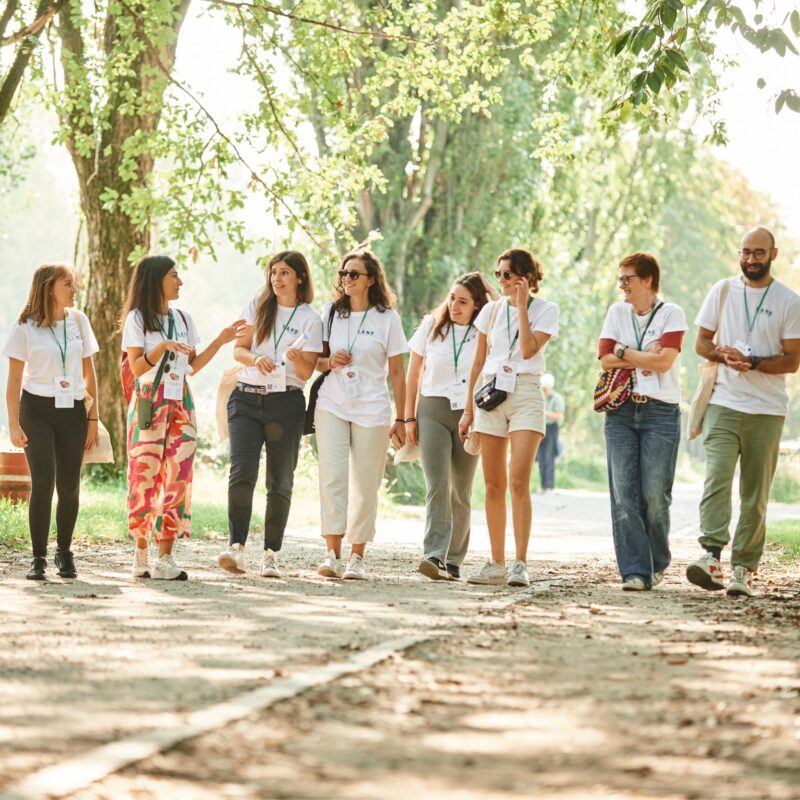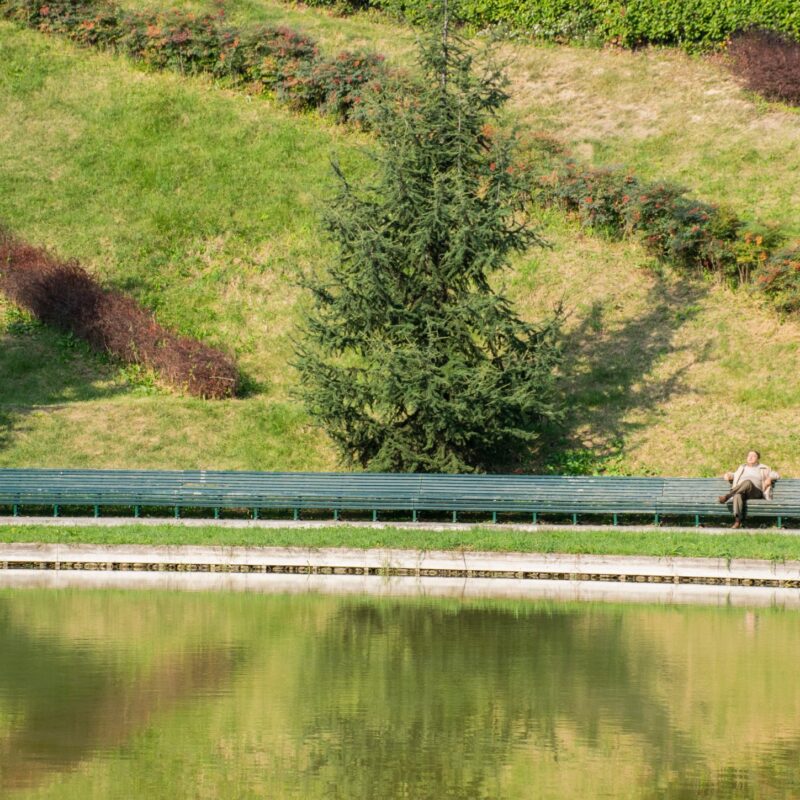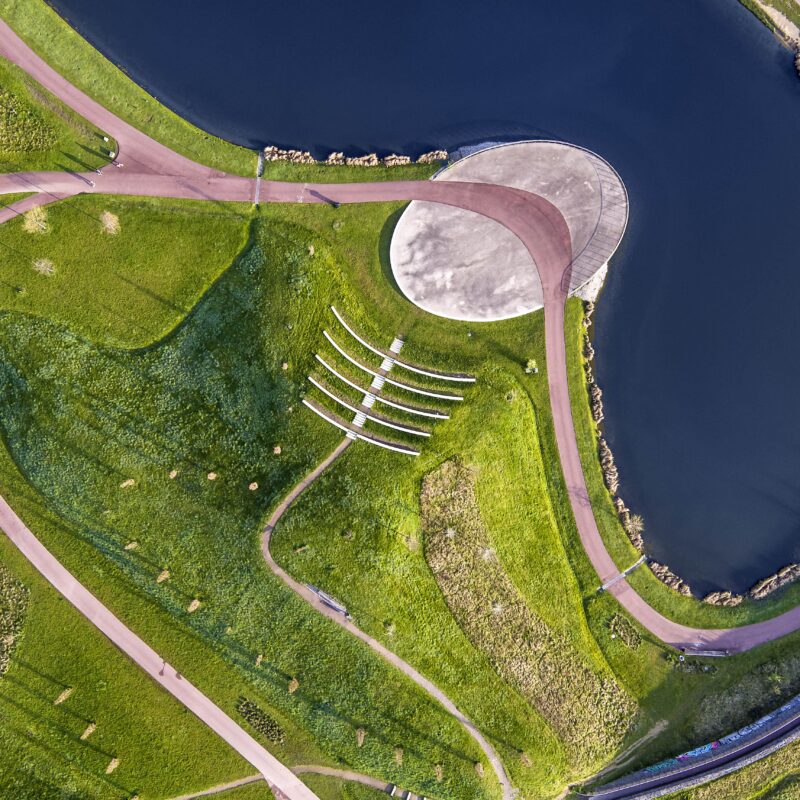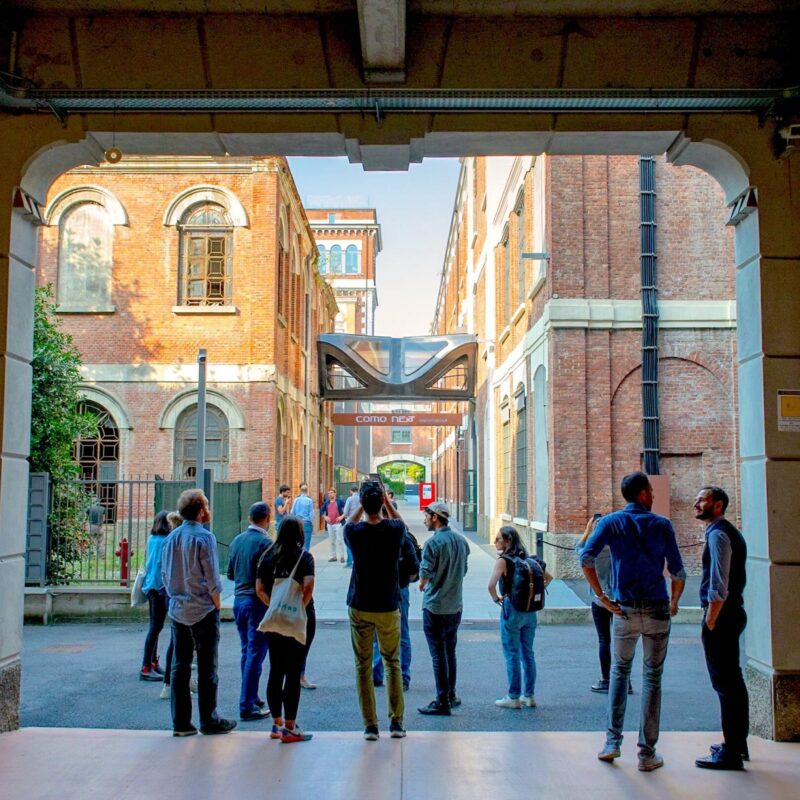
Planting New Perspectives
Landscape architecture, the “New European Bauhaus”, the role of public space and the power of bold ambitions – experiences of a young landscape architect
By Stella-Zoë Schmidtler.
As a young female landscape architect, I’m part of the generation of planners who started their career with a variety of new challenges on their plate. The environmental crisis and demographic changes enriched our field in many ways that go far beyond aesthetics and planting. Any project,whether it’s 100 or 100,000 square meters in size, has the potential to improve the social and environmental condition of the space and its surroundings; especially if we consider how the economic value of space is interminably rising.
I received my undergraduate degree from Hochschule Geisenheim University and my masters from Universitat Politècnica de Catalunya, Barcelona. My deep knowledge of construction and project execution was enriched by eco-centered project topics such as wildfire management, coastal erosion, and strategies to dispel mass tourism using landscape architecture as a guiding instrument. I gained more than 4 years of work experience in the private sector in Germany, Spain and Switzerland, and then decided to apply for an administrative Traineeship at the European Commission, through which I wanted to learn about their strategies of policy-making and funding systems, and how both affect our work as planners. During one year within the Joint Research Centre in Brussels I co-developed processes on Scientific Development (standardisation, open access to JRC research infrastructures), and in October 2020 joined the core team of the “New European Bauhaus” initiative that President Ursula von der Leyen had launched in her State of the European Union Speech one month before.

Concept sketch New European Bauhaus by Stella-Zoë Schmidtler during her work with the Commission's team
Global Movement
For my expertise as a landscape architect, I had the good fortune to join Xavier Troussard and Alessandro Rancati on the ground floor of shaping the initiative for a more inclusive, sustainable and beautiful way to design our joint future. As the team slowly grew, we worked closely with the President’s advisory team I.D.E.A., and the first few months focused on the design concept for the initiative, which was intended to become a movement just like the original Bauhaus. We held many inspiring interviews with ambitious organizations and individuals which supported the values of the New European Bauhaus and were eager to start a movement together. The website we designed had already been launched in January 2021 and offered various ways to engage with the initiative: to share ideas of how to make Europe more inclusive, sustainable and beautiful, send in projects that promote inclusiveness, sustainability and aesthetics, or host a conversation on New European Bauhaus topics.
The audience for the initiative thus grew very quickly, and we received even more feedback, ideas and many messages from motivated and capable people who were ready to participate. Besides the open approach to the public – showing the institution in listening mode and assuring an unusual bottom-up approach of engaging with anyone who wanted to engage – the President’s cabinet also required a high-level roundtable of international experts from different sectors as external representatives acting as ambassadors. Part of my work was also dedicated to preparing this roundtable, from evaluating potential candidates, organization and co-hosting of group interviews, and proposing candidates for the cabinet to select.
The Role of Public Space
The opportunity to propose young people as candidates, including more women and people from disadvantaged countries or regions, was a crucial experience for me. With the candidates who accepted our invitation we set up conversations in groups of three, mixing them in terms of nationality, age, profession, and attitude, to challenge their qualities of flexibility, expertise and communication. Participating in conversations with personalities like Alexandra Mitsutaki, Shigeru Ban, Olafur Eliasson, Gina Gylver, Jan-Christian Vestre or Bjarke Ingels was the least expected but professionally most inspiring part of my experience within the European Commission. With all the challenges we discussed in the context of the New European Bauhaus, I realized how urban or rural public space can and must mediate in so many ways in order to bring people back together in the globalized world. The insights on how the European single market is working, why we need European regulations and standards, and the people who provide scientific evidence for making political decisions showed me the importance of European institutions. The most impactful thing I realized was that, due to the Union’s complexity, all processes and projects within the European Commission are very slow and require a great deal of sensitivity, but in the end, they do not directly lead to change in the field. There are hundreds of experts, scientists, lawyers etc. who work on shaping the financial and legal framework to constantly improve the lives of people living in Europe. We planners need to seize the many opportunities and tools they give us and take the ambitious visions for the future to the field. To me, landscape architecture is planting new perspectives. Physically or mentally, it is about telling a story, explaining why things are the way they are and helping people to envision a good future. Landscape architecture stands between the man-made and the natural, and its goal must be to assure the most respectful interaction between the two. We create spaces for people while we must assure natural functioning and an effective enhancement of value. We have many opportunities to save the world with landscape architecture; we just need to stay constantly informed, be bold with our ambitions, and spread awareness of our work and its potential.
Read other Articles from this Edition






